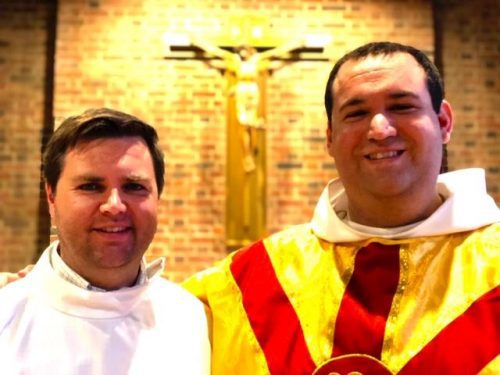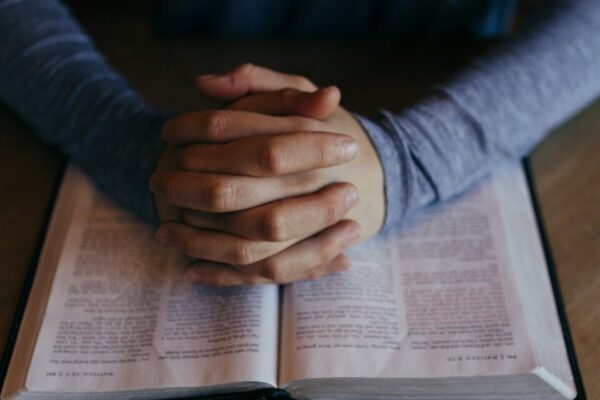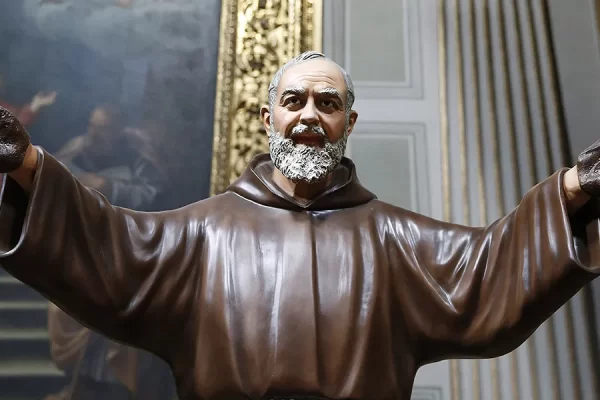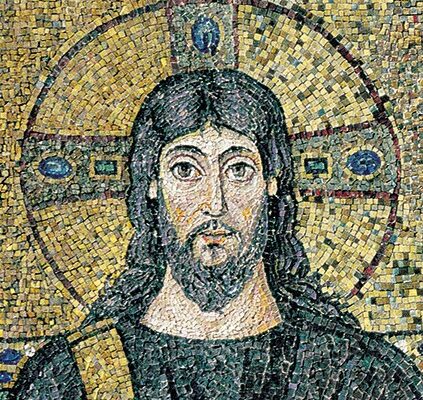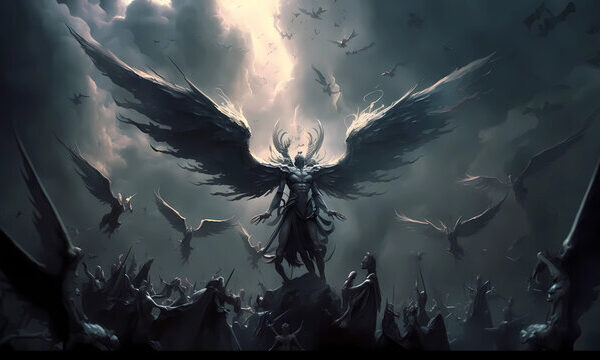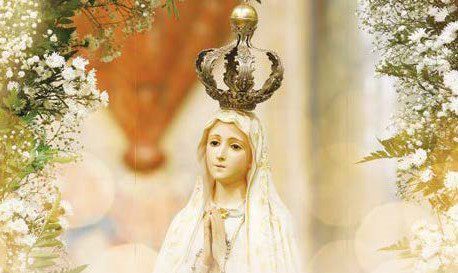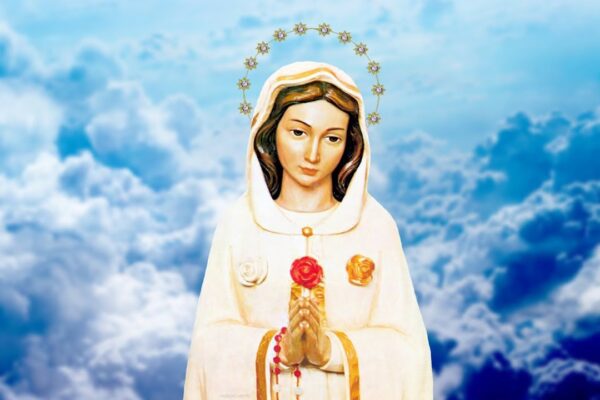
Chaplet of the Ten Virtues of the Blessed Virgin Mary
A Glory to BeholdMary’s Ten Evangelical Virtues are typically presented in the shape of a Ten-ray star. A prime example of such Marian iconography can still be seen on the ceiling of an 18th century Marian Church in Gozlin, Poland.Above all, the star has great spiritual meaning, but it is also significant for our edification. As the morning star, Mary is radiating her Ten Evangelical Virtues and inviting us to be inspired and guided by her glorious example on our earthly pilgrimage. In our battle against evil, the Blessed Virgin Mary shines as a pattern of perfection. What is most inspiring about Our Lady’s virtues, as recorded in the Gospels, is their perfect correspondence with the beatitudes of her Son in the Sermon on the Mount (Mt 5: 3-12)! These blessings of Jesus form the very heart of the Gospel, which Mary’s life perfectly reflects. So it is not surprising that Mary’s virtues have been a source of inspiration down through the centuries, starting with the early Christians. After all, whoever takes to heart Jesus’ teachings and follows Him is like Mary, the model disciple of the Lord. To Jesus through MaryWe are considering here one of the Church’s great treasures. Great mystics saw in Mary’s virtues a simplified way to holiness for the faithful: Let us be like Mary and we will be holy, fulfilling the challenge of the Gospels. Thus, a great Marian devotional tradition started, best described by the principle “To Jesus through Mary.” And it has always received the support of the highest Church authorities. Both Popes Paul VI and John Paul II are good examples of this. In his exhortation Signum Magnum, published on the 50th anniversary of the Marian apparitions at Fatima, Paul VI dedicated the entire second part to the “devout following of the Blessed Virgin Mary’s virtues.” He again confirmed the rightness of the way to holiness in Jesus “through Mary”. So, too, John Paul II is known for his deep Marian piety, summed up best in his papal motto, Totus Tuus, and his everyday entrustment of himself to the Blessed Mother. Our model of lifeTurning to our own Marian Congregation, it is not an accident of history that no one else but Mary has been given to our religious community as a model. We were called into existence by Divine Providence and, in our early history, were known as the Order of the Immaculate Conception. We Marians were called from our beginnings to defend Our Lady’s perfect holiness in her Immaculate Conception. That also entailed glorifying her and imitating her evangelical virtues. One of the greatest of our early Marians, Fr. Casimir Wyszynski, said: “Whoever wants to glorify the Blessed Virgin Mary and wishes to stay under her protection, should love and respect her – but above all, should exercise the evangelical virtues and, through this, shall follow Mary’s example.”Historical RootsIt makes perfect sense, then, that, as our rule of life, we Marians chose the Rule of the Ten Virtues of the Most Blessed Virgin Mary. This rule has its roots in a religious order dedicated to Our Lady.Let me share with you a bit about its origins. In 1501, an order of women religious was founded. It was named the Sisters of the Annunciation of the Blessed Virgin Mary. Members of this order were, and still are today, called Annunciades. The co-founders of the Order were St. Joanne de Valois (1464-1505) and Blessed Gilbert-Nicolas, OFM (1463-1532). Inspired by the founding of the Order, Blessed Gilbert wrote the Rule of the Ten Virtues of the Most Blessed Virgin Mary. He reasoned that since Mary was the model for the Sisters, her virtues — as named in the Gospels — should form the basis of their rule of life. According to the Sisters’ history, the “Chaplet of the Ten Evangelical Virtues of the Most Blessed Virgin Mary” was then composed by St. Joanne, who was canonized in 1950 by Pius XII. This prayer is based on the Church’s rich rosary tradition and reflection on Our Lady’s virtues (See section on how to pray the Chaplet at the end of this article.) For the Sisters, the Chaplet served as a daily reminder of their rule of life and Marian foundation. A Rule and a Prayer for MariansThe Marians were the first and remain the only community of men religious based upon the Rule of the Ten Virtues of the Most Blessed Virgin Mary. We received this rule in 1699. Until the renovation of the Order, which occurred in 1910, Marian priests and brothers professed their solemn vows based on the Rule of the Ten Virtues written by Blessed Gilbert. It’s important historically to note the prominence of the Chaplet in the life of our Marians before the renovation. Each Marian would hang his chaplet beads from the sash of his white habit. Called a decima (“ten” in Latin), the chaplet is comprised of 10 black beads, with a crucifix on one end and a medal with an image of Mary Immaculate on the other. The White Marians carried their chaplet or decima with them all their lives, and were buried still holding it in their hands. This chaplet was given to each White Marian on the first day of his religious life, when he was vested in his habit. “The Chaplet of the Ten Evangelical Virtues of the Most Blessed Virgin Mary” was the Marians’ everyday prayer for almost two and a half centuries. In fact, in Marian iconography, paintings of our Marian Founder, Bl. Stanislaus Papczynski, and Fr. Casimir Wyszynski typically depict them holding their chaplet beads. A prayer for allPerhaps the Venerable Servant of God, Fr. Casimir understood and expressed best the spiritual significance of this powerful prayer when he wrote in the introduction to the book called The Morning Star: Although our most beloved Lady was shining with innumerable virtues, all but 10 were difficult not only to imitate, but even to understand, because, through them, Our Lady surpassed…
